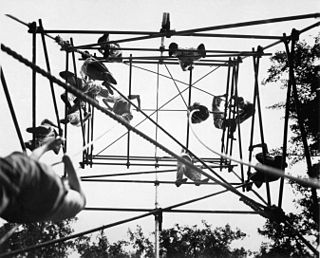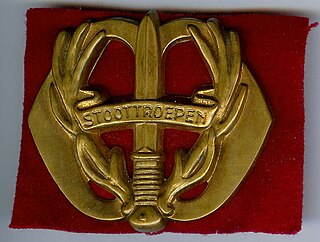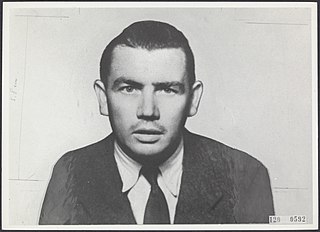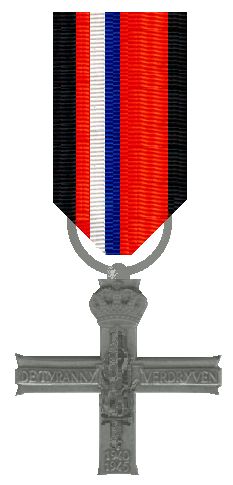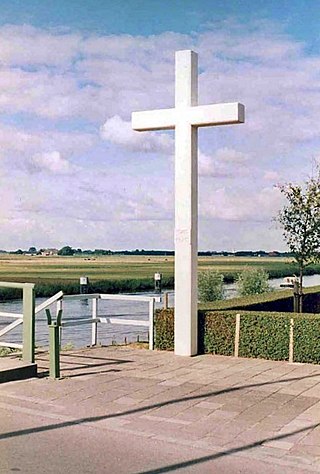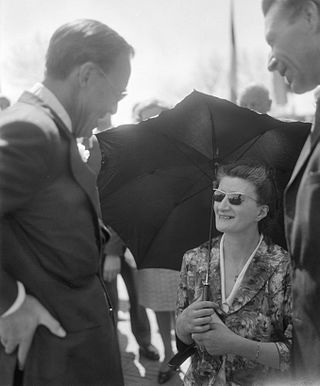History
Until 1944 the resistance groups, insofar as they were in contact, worked independently under the supervision of the Bureau Bijzondere Opdrachten (BBO, 'Office of Special Assignments') of the Dutch government-in-exile in London. When they were merged into the Binnenlandse Strijdkrachten, Prince Bernhard of Lippe-Biesterfeld was appointed commander of this new organization, although he remained in London. The commander of the BS in the occupied Netherlands was Colonel Henri Koot, who was in Amsterdam.
At the time the groups were united, they had less than 10,000 members between them. They were also very poorly armed, though this would improve following Allied weapon drops.
The full name of the organization was the Nederlandse Binnenlandse Strijdkrachten (NBS). The short form of the name was preferred, however, not least because the full abbreviation resembled that of the collaborationist National Socialist Movement in the Netherlands, the NSB.
The BS was created in the image of the French Forces of the Interior and enjoyed great support from Queen Wilhelmina. The organization was divided into Stoottroepen ('Assault Forces') and Bewakingstroepen ('Guard Forces'). In the still occupied part of the Netherlands, the Stoottroepen were referred to as the Strijdend Gedeelte der BS (SG; 'Combatant Division of the BS'). The men of the Stoottroepen had to come from the armed resistance. The Bewakingstroepen were made up of "those who have made themselves available to maintain or restore order and peace on the day of liberation and thereafter." They would only take to the streets after the liberation. So for the time being they were little more than members-in-waiting.
The BS was founded partly to keep the armed resistance movement manageable, especially now that it would be supplied with weapons on a large scale. The organization was bound by all sorts of rules. For example, members of the BS were only allowed to appear publicly as an army if the commander (Prince Bernhard) gave the signal. The union of the three armed resistance groups also did not mean that those groups were immediately absorbed into the new organization. The differences between them proved too great for that.
Regular top meetings took place between the three groups under the code name "Delta-Center." "Commander Delta" was Colonel Koot. In September 1944, the OD brought in 4,000 men, the LKP 1,800 men, the RVV 1,000 men.
Members of the BS wore blue boilersuits as their uniform. [1] [2]
From September 1944 to May 1945, a total of 1,730 members of the organization were killed. The BS experienced tremendous growth from October 1944 on. That great influx started in the liberated southern provinces.
In May 1945 there were 150,000 to 200,000 members of the BS throughout the Netherlands. The entire resistance was estimated to have no more than 25,000 (in 1943) to 45,000 (1944-1945) participants.
Neither the Germans nor the Allies thought highly of the BS. The organization expected to stand "shoulder-to-shoulder" with Allied soldiers to "whip the krauts ", but the Allies concluded an armistice with the Germans on 4 May 1945, which included the condition that only Allied units would disarm the Germans, and not the BS. This effectively made the Binnenlandse Strijdkrachten redundant. The Allies then forbade members of the organization from appearing armed in public, because they feared chaos would break out and BS men would lynch Germans. The organization did not comply with this ban, which, according to researchers, has led, among other things, to violence such as the 7 May shooting on Dam Square in Amsterdam. [3]





